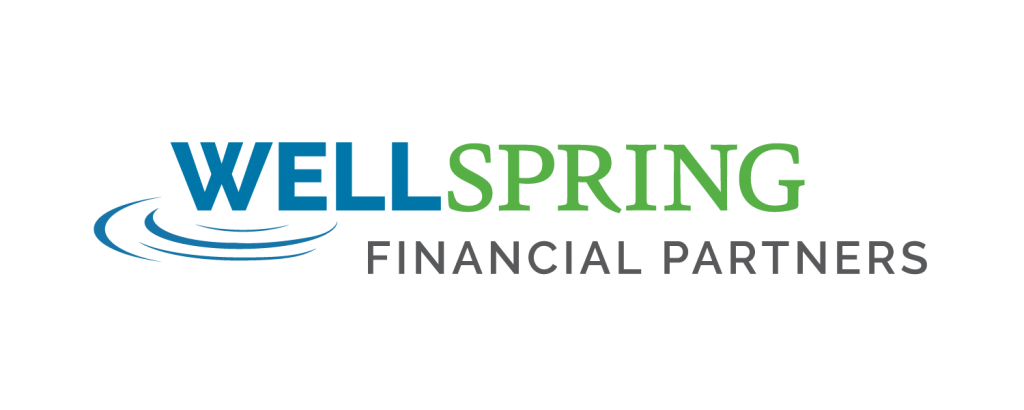The question that I am regularly posed by clients has to do with risk:
- How risky is my portfolio?
- Do I need to worry?
- With this political environment, and the USA government debt, should I be taking protective steps??
Without being laborious and / or ‘whispering sweet nothings’ in your ear, let me say those are valid and rational questions… but the answer is a firm “No”. I’ll explain more at the end why that is the case. However, let me suggest what IS your biggest risk in your portfolio and what steps are needed and being taken care of by Wellspring to the best extent possible to mitigate it. That risk is inflation.
The reason the ‘risk of inflation’ is so substantive is simply because you invest your money today to be able to pay bills tomorrow (be it for travel, food or presents to the grandchildren). Alternatively, for some other households, it’s the risk of not leaving the amount of legacy (inheritance) for heirs that was originally desired because the price of buying eggs and coffee at the grocery store or property insurance on the home is eating up the money they had desired to leave behind. The forementioned condition is known as ‘purchasing power risk’. Stated a bit differently in hopes of describing it fully for you, in pure finance terms, purchasing power risk is when your ‘real rate of return’ (which is your nominal portfolio earning level minus the level of inflation) declines from what it was before or what you had planned it to be. “Money don’t buy what it used to” is the vernacular my dad formerly said and one we all understand. Thus, if you don’t keep up with inflation, your lifestyle will slowly but naturally decline.
In my opinion, there is not much more frustrating experience than for an investor to save money now and have it worth less later. The most common measurement of inflation is known as the Consumer Price Index. The latest CPI numbers just came out and showed inflation at 2.9%, with ‘core inflation’ (as it’s called if you remove the volatile categories of food and energy) at 3.0%[i]. The basket of goods the Social Security Administration uses to calculate its Cost Of Living Adjustment (COLA) for its monthly payments to claimants was 2.8%, as it’s based on CPI-W (a slightly different inflation basket that uses wages)[ii]. So, if you put money in a bank savings account and it’s earning 0.62% per year (which is the current national average from banks unless you ask for more[iii]), you are losing 2% + per year. To put hard numbers to it, at 3% inflation, $100 now is worth only $74.40 in just 10 years’ time, a whopping 25% less!! Your 100 bucks is still show as 100 bucks on your bank statement, but you can only buy ¾ of a can of soup with it. That’s why inflation is called the silent killer. But, because of this purchasing power risk to citizens of the United States, the Federal Reserve / Central Bank has a stated target inflation of 2%. An achieved 2% inflation rate will make your current $100 worth $82.03, which is still less but more manageable. With 3% inflation as we are experiencing now, the ‘target is not achieved’, and thus the conundrum of the United States Central Bank as to whether cutting interest rates (which were raised to tame inflation) is a right thing for them to do.
As mentioned in previous newsletters, there are really only three categories of investments (stated below along with their long-term average annual returns[iv] and forecasted ones[v]):
- Cash (earning plus or minus 3%)
- Bonds (earning 4-6%)
- Stocks (or equities) (earning 8%-12%)
Having said that… you can see cash is not an investment. When your bank tells you to “invest” via their savings accounts it’s an act of skullduggery. Eliminating cash, we are left with two investment categories where we get a positive real rate of return, bonds and stocks. For that simple reason, when you invest (at least with Wellspring), all portfolios should NOT have cash as a position beyond +/- 1%. And, as an investor, my firm recommendation is that you have stocks for 60% – 90% of your portfolio. Why??? Three straightforward reasons:
- Inflation will occur. Central governments will do all they can to avoid ‘deflation’ because that would make paying back their debts more expensive.
- Stocks adjust more for price increases than any other category of investment.
- Stocks earn ~10%. Thus, needing a positive real rate of return, you want more margin over inflation.
Lastly, to finish off my answer to the initial questions in this newsletter, if you have no stocks in your portfolio, you actually lower your margin of financial success. You have increased your long-term monetary risk, not decreased it. Finding this magical ‘not-too-little / not-too-much level’ is why your comprehensive financial plan is tested all the time to make sure we have the right Goldilocks amount. That test – plus being massively diversified with over 15,000 individual stocks so that you are not concentrated in any one stock or sector – is how we offset this dangerous and enervating investment risk called inflation.
It remains my deep and distinct honor to serve you well.
Patrick Zumbusch, Founder and CEO
[i] “Inflation Accelerates To 3%, But Is Less Than Expected” (Conrad Putzier and Harriet Torry, Wall Street Journal, October 25-26, 2025)
[ii] “COLA Will Boost Social Security Pay By 2.8% Next Year” (Ann Tergesen, Wall Street Journal, October 25-26, 2025)
[iii] “What Is The Average Interest Rate For Savings Accounts?” (Matthew Goldberg and Karen Bennett, Bankrate.com, September 11, 2025)
[iv] “Long-Run Asset Returns: A Deep Dive into Historical Real and Nominal Returns” (Mike Abbott, Silverhall Wealth, January 13, 2025)
[v] “Experts Forecast Stock and Bond Returns: 2025 Edition” (Christine Benz, Morningstar, January 13, 2025)




